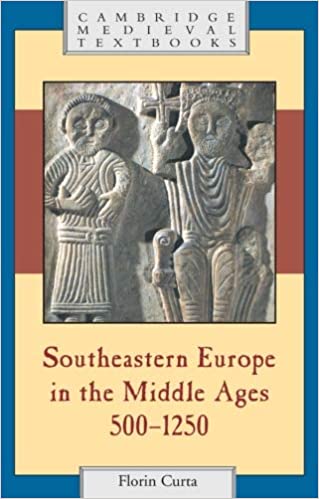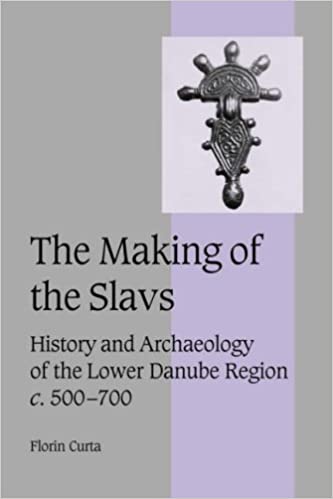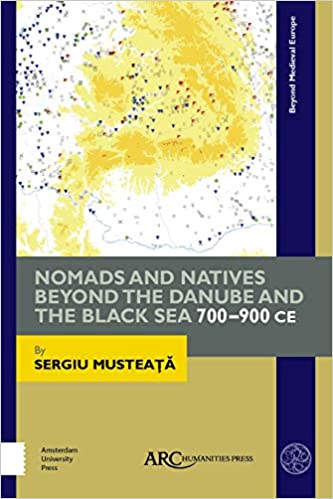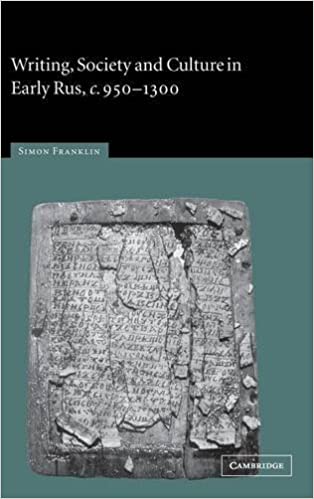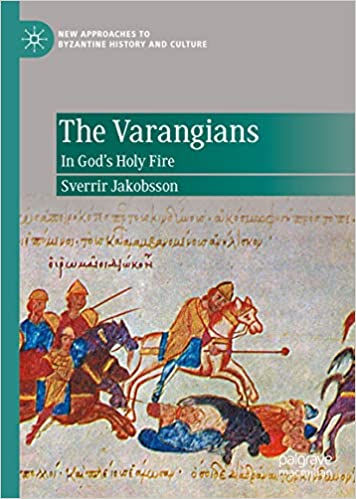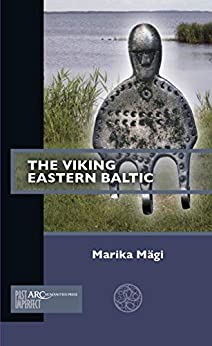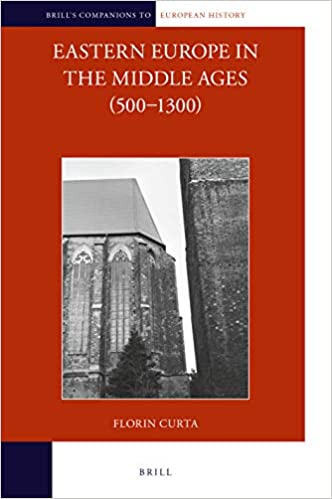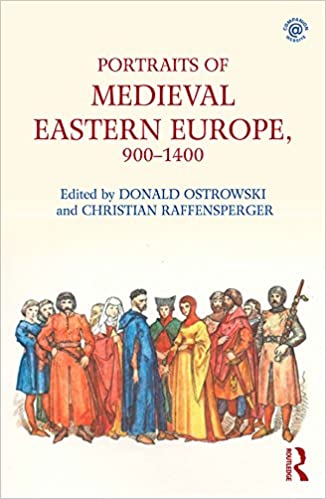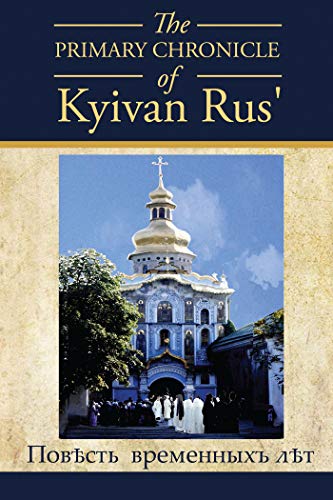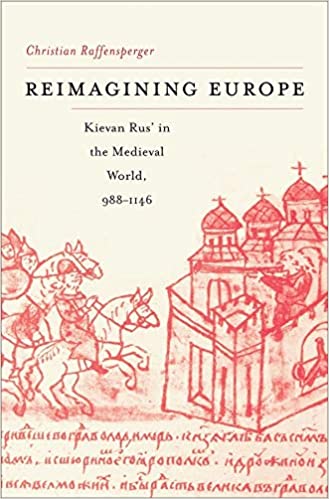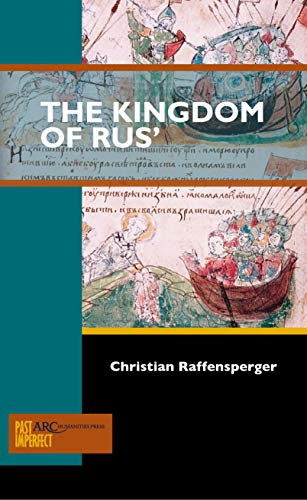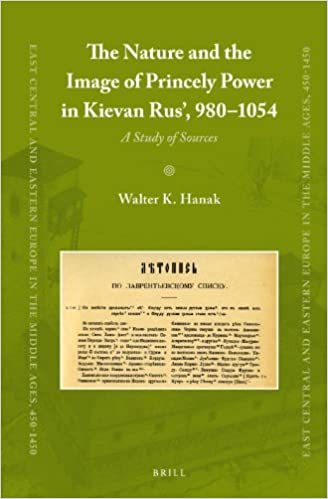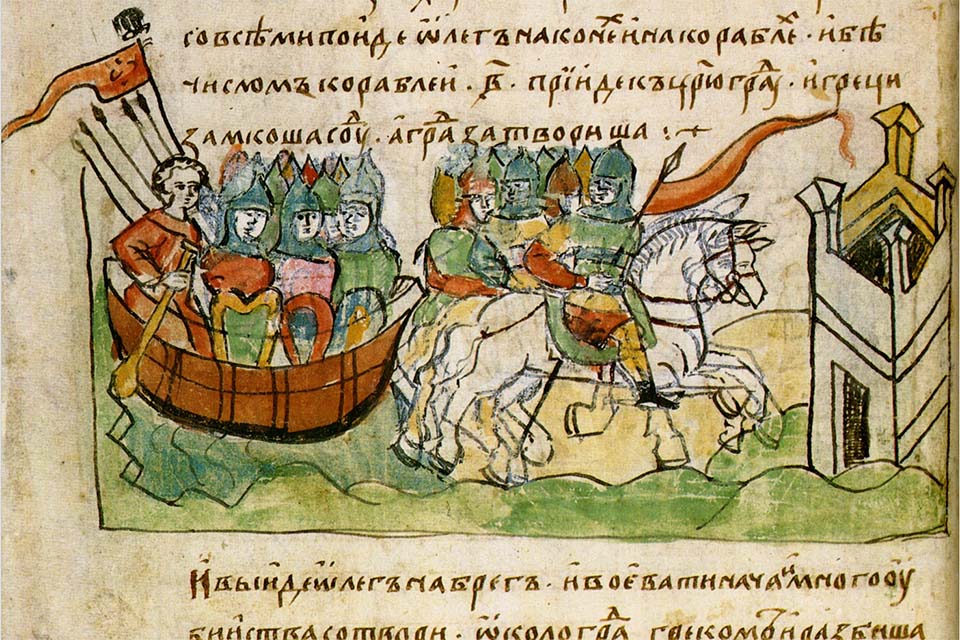Putin’s Orthodox worldwiev calls for him to play the leading role in the reenactment of the medieval Kyivan Rus’
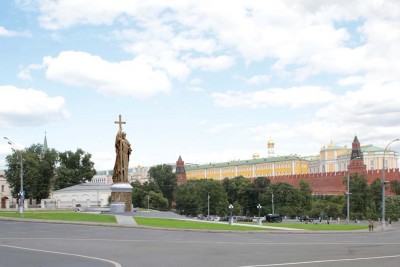
For years the West waged war on ISIL and the “medieval” idea of the redemption of the world though the return of the “Mahdi”. To some extent Putin’s worldwiev matches this set of ideas. Except Islam is now substituted by Orthodoxy, and Putin plays the leading role in the reenactment of the Kyivan Rus’.
This political program was manifested in November 2016, when Putin unveiled a massive monument outside the walls of the Kremlin. Contested by UNESCO, which threatened to remove Kremlin’s World Heritage Status, the statue rose 28 meters portraying St. Vladimir the Great (958-1015) founder of the Kyivan Rus’ and considered the national saint of Ukraine.
The outline of the history of this saint is a precondition to understanding the Russian dictator’s preoccupation with his resurrection as a national symbol. Born around AD 956, Vladimir I, aka Volodymyr or in German, Valdemor, was king (kniaz) of what is generally known as Kyivan Rus (c. AD 880-1100) – a realm called by the Russians “Eastern Europe” or by the Europeans, “European Russia” or “Ruthenia”. Whatever we call the principality, it turned out to be a significant European player at the eve of the first Millennium. In the following, we shall use Kyivan Rus’.
Landscape and principalities in the 8th – 10th century
In its heyday, Kyivan Rus’ covered a landmass from the Black see littoral, the Pontic Steppe, the forests to the west and the boreal forests and tundra to the north. This realm bordered on the Middle Volga region governed by an Islamic and Turkic Bulgar state to the east. To the southeast lay the Khazar Khaganate, which had adopted Judaism, and which held Crimea and lands further east. The Khaganate was the first permanent state in the region. Much ink has been spilt on the Khazar conversion to Judaism, an event dated to ca. AD 800. Probably, the conversion was part of a strategy to keep the Arabs and the Byzantines at bay. However, during the 9th century, the Khazars gradually lost momentum, enabling a Byzantine takeover from the south and a push from the north. The latter was initiated by Scandinavian Vikings, while another was set in motion by the Pechenegs and Bulgars (Turks) from the east.
The Rus
Who was responsible for the formation of the Kyivan Rus’, which emerged in this 10th-century cauldron? Was it founded by Vikings on trading expeditions down the rivers to Bagdad? Alternatively, was it essentially the result of East Slavs creating a new state, which Russian historians claim. Or (more likely): Was it perhaps ultimately an amalgamation of merchants and mercenaries, who settled to control the river routes and the trade from North to South, thus forging a grand dynasty surrounded by a powerful and distinct elite on the lines of the Carolingians and Ottonians?
One of the challenges here, is to reconstruct the perspective of the different people active along the Austrevegr and the Russian rivers. How did they think of themselves? How were their ethnocultural identities constructed? How did they think about each other?
Without a doubt, though, the Vikings – or Rus’ – played a significant role in the creolisation of the people entering this crucible. The ethnonym, Rus, probably derives from the proto-Finnic and Finno-Ugric name for the Swedes (‘Ruotsi), the “men, who row”. The Russian “Anti-Normanists” have offered alternative explanations, but these are now generally considered part of the Russian Slavic ethnogenetic thinking or mythmaking (recently adopted by Vladimir Putin).
The Vikings
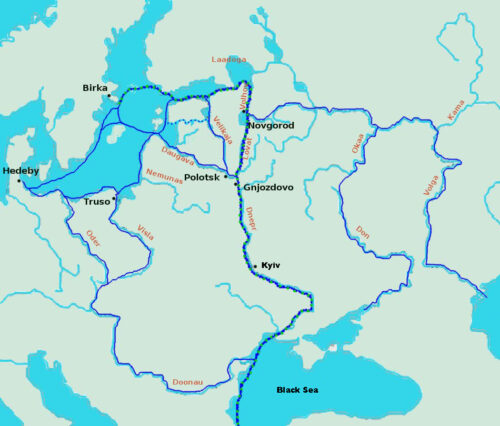
The first raids commandeered by Vikings recognisable through their weapons, ships, and cultural paraphernalia, targeted the Eastern Baltic. At this point – witnessed by the Saaremaa Ships from c. AD 750 – the Vikings were fully operational. At the same time – dendrochronologically dated – Staraya Ladoga was founded 100 km east of present-day St. Petersburg. Soon, Ladoga was a stepping stone for the next stop, Novgorod, and further south along the River Dniepr to Constantinople. This route is known as the Varangian trade route from Scandinavia to the Black Sea and Byzantium. An alternative route led down the river Volga along the Volga trade route to the Khazar capital of Atil and then on to the southern shores of the Caspian Sea, all the way to Baghdad. Down the rivers, the Vikings brought furs, swords, slaves and amber to the Black Sea, returning with silver and silks. The furs were obtained by peddling glass beads to the Finns. Thus, Ladoga and later Novgorod (Holmgarðr) functioned as a port into what later became the Kyivan Rus’ (Garðaríki).
During the 9th century, Novgorod captured the central role from Ladoga, while Kyiv was established as a trading post on the Dnieper. In AD 839, we hear about the first “Rhos” arriving in Ingelheim via Constantinople. These Rus were part of an embassy sent by the emperor. Later, we find their archaeological traces as a cultural admixture in the burial grounds along the rivers and at the later trading posts – Polotsk, Gnëzdovo and Kyiv. As successful tradesmen, the Rus were regarded with a mixture of fascination and fear. Gradually, they moved into the southern steppes and forests dominated by the different groups of Nomads – the Magyars, the Khazars and the Pechenegs.
In AD 860, a thick, sudden hail-storm of barbarians”, the Rus, attacked Constantinople. Naturally, the Veil of the Virgin was sent into the Black Sea, where she dutifully whipped up a devastating storm saving the grandest city of them all from the raiding party. With a fleet of 200 ships, this was not just a hit-and-run raid but a concerted effort to take on one of the vast prizes of the civilised world. The Vikings had arrived on the grand stage of Byzantine history. No more came out of this raid, though, than a series of pillaged monasteries, but the event left its mark on the historical recollections of a city with perhaps 5-800.000 inhabitants.
Between AD 870-900, however, there seems to have been a lull in hostilities and trade. During these decades, the flow of silver dirhams seems to have decreased, constituting a distinct “silver crisis”. Also, investment in hostilities focused on the western attacks on France and England, leading to the establishment of the Danelaw and Normandy. Another explanation offered is the political crisis, which engulfed the Abbasid Caliphate in the later part of the 9th century, creating a need to regroup the trading routes through the western part formerly dominated by the Magyars. Meanwhile, the latter were pushed back from the Pontic Steppe by the Pechenegs, who in their turn were pushed by the Khazars residing between the Volga and Ural Rivers.
The Kyivan Rus’
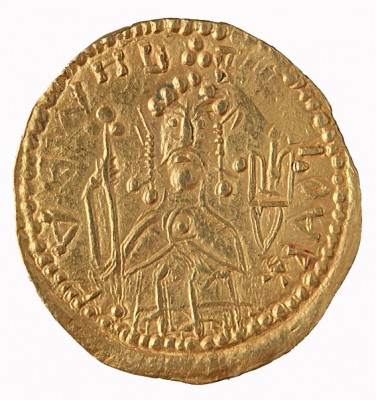
In this crucible of shifting alignments of the nomadic tribes or principalities, the Rus moved forward, founding a settlement at Gnëzdovo, later Miliniska, a Graecized version of Smaleskja (Smolensk). This trading post soon grew to become a halfway bridgehead towards Kyiv conquered in AD 882.
In the beginning, ca. AD 880, Kyiv was peopled by no more than 100-200 individuals. Soon, however, the town covered about 50 ha and could muster several thousand inhabitants. In this process, the riverside became dotted with small one or two-room wooden logcabins signifying the presence of Rus or Scandinavian settlers. Significant finds in graves at Shestovitsy and Chernigov witness to the presence of a very wealthy and distinct warrior elite embellishing their dead with a typical admixture of “Viking” artefacts.
In AD 907, a possible second raid led to a formal tractate, dated AD 911, between the two warring partners, the Byzantine Emperor, Leo VI and Oleg (ON Helge). In the treatise, the latter was represented by Karl, Ingjald, Farulf, Vermund, Hrollaf, Gunnar, Harold, Karni, Frithleif, Hroarr, Angantyr, Throand, Leithulf, Fast and Steinvith – all Scandinavian names. Oleg was the son of the first Rus leader of Kyiv, the semi-legendary Rurik. His descendants, the Rurik Dynasty or the Rurikovichi ruled the principality until its dispersal in the13th century, at which point the dynasty engulfed the region in Middle Volga and was transformed into the Russian rulers. The treaty’s content mainly stipulates rules and regulations regarding trade and commerce along the rivers.
One of the results of the treaty was the deployment of more than 700 Rus warriors in the fleet of the Emperor in AD 911. The treaty may have been part of negotiations initiated by the Emperor to recruit mercenaries. Probably, this constituted a precedent for the later formation of the Imperial Varangian guard in the 11th century.
Whatever the source – trade, raids or mercenary activities – silver dirhems once again poured into Scandinavia as part of the activities on the Austrevegr.
Kyiv
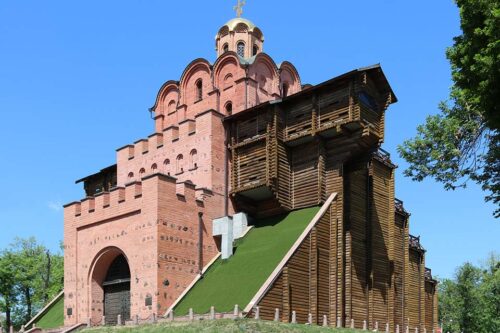
During the first half of the 10th century, Kyiv continued to play its role as a summer-trading post. At this point, Novgorod was still the main centre of the Gardarike. However, at the end of the 10th century, a more permanent elite compound was constructed on the Starokievskaia Gora, which covered ca. 10 ha and held the stone palaces of the politico-religious elite and the first churches. The Palace of Vladimir the Great covered 400 m2 and was probably a two-storied building. Nearby was the first church – the Church of the Tithes, which acted as the first royal mausoleum for the Varangian Rus’ dynasty. In 1018, Thietmar of Merseburg considered Kyiv “a very strong city”. During the rule of Iaroslav the Wise, the city of Kyiv grew markedly. A new area covering 72 ha was surrounded with a wall, 3.5 km long. Four gates led into Iaroslav’s city, one of which was the monumental Golden Gate modelled on those of Constantinople.
The first Christian convert was Olga, Vladimir’s grandmother, who accepted Christianity in AD 955-58. She was the mother of Sviatoslav I, who was known for his successful campaigns against the east and south, in which he conquered the remains of the Khazars and Bulgarian principalities. At the end of Sviatoslav’s rule, he governed the largest territory inside Europe. He remained a staunch pagan his whole life. He had (at least) three sons, of which one – Vladimir or Valdamarr Gamlr (AD c. 958-1015) – was appointed ruler of Novgorod in his youth. At his father’s death in AD 972, he fled to Norway, where he, with the help of his relatives, gathered an army of Varangians – Norse soldiers. Eventually, after eight years of war, Vladimir consolidated his Rus realm consisting of modern-day Belarus, Russia, and Ukraine.
During the early decade of his rule, Vladimir the Great actively tried to bolster paganism. However, in AD 987 he presumably sent out emissaries to different churches and religious communities to ascertain which was the best and most profitable church with which to align. In the end, he joined the Orthodox church and succeeded in forging a marriage with Anna Porphyrogenita, the sister of the Byzantine Emperor. Later, he may have married a granddaughter of the Holy Roman Emperor, Otto the Great. Vladimir is said by Thietmar of Merseburg to have been a great “profligate” fostering twelve sons with at least four wives. One of these married into the third major power dynasty in the early 11th century, the Jelling dynasty of Sweyn Forkbeard and Cnut the Great. Vladimir was first canonized 1254. He still plays the role of the national saint in the history of both Ukraine and Russia.
Vladimir – a saint for all? Or only for the Pan-Slavic Russians?

The appropriation of Kyivan Rus’ as part of national history was already a topic of contention in Ukrainophile versus Russophile schools of historiography in the 18th century. Initially, the debate was named the “Varangian Controversy” and focused on whether the founders of Kyivan Rus’ were German or Slavic. At the centre of this dispute was whether Vladimir was of Scandinavian or Slavic descent, and following this, was Kyivan Rus’ a European empire or a proto-Russian state? Further, how should we think of Vladimir? Was and is he a European or a Slavic saint?
In later years, this historiographical dispute has blossomed once again following the intense preoccupation inside Putin’s governmental circles with the idea of reconstructing a Greater Russian Empire consisting of Belarussia, Russia and Ukraine. As opposed to this, Ukraine, post-1989, aggressively sought to expropriate the legacy of Kyivan Rus’ by posting the images of the medieval Ukrainian kings on their banknotes and adopting the trident (or rather the falcon, the ancient medieval symbol of the Rurikovichi) as their new national heraldic sign. Also, the rebuilding of the medieval churches destroyed by the Bolsheviks took place.
Exactly at which point, Vladimir Putin decided to link his fate with that of St. Vladimir is difficult to establish. However, in 2005 Putin became interested in organising the reinterment of a certain fascist thinker and historian, Ivan Ilyin. He had been expelled from Russia in 1922, but was welcomed by Mussolini and Hitler. Later in Swiss exile he wrote to inspire the White Russian community.
In 2009, Putin visited the grave of Ilyin in the company of the Russian monk, Shevkunov, who has been referred to as the personal confessor and spiritual guide of Putin. Shekunov is considered ultra-conservative, anti-semitic and anti-catholic, and often accompanies Putin on his international travels. A modern Rasputin?
At the gravesite, Shevkunov blessed Putin and suggested that his role was in the near future to fulfil the eternal cycle of the Kyivan Rus’ state forged by Vladimir the Great in AD 987. In 2012, Putin suggested as much to the Russian Parliament. In the following year, 2013, in Kyiv, he even proclaimed that the union of Ukraine and Russia was blessed by God and would take place on the authority of the Lord. Then, in 2014 the annexation of Crimea followed, to be finally “crowned” with the ongoing 2022 Ukrainian war.
A keynote in Putin’s web of historical and medieval reenactment is this Ivan Ilyin, who has been named a Russian Christian Fascist. In 1917, he finished his thesis on God’s worldly failure decrying the presence of “motion” in history. While Lenin accepted with Hegel that history would progress through conflict, Ilyin thought that the liberation of humanity would only take place at the point of the elimination of history. One day, Ilyin thought, this eradication would come about through the effort of a saintly hero, who larger than life would abolish the “Middle Class” and its morally depraved idea of “progress”. Based on this idea, Ilyin fashioned the fascist seizure of power as “an act of salvation”. In the aftermath of WW2, Ilyin began to imagine the “Unsoiled” Russia as the spiritual redeemer of the world or the recycler of native virtue. Part of this idea was the tenacious adoption of the Orthodox, positive attitude towards war and physical opposition.
Today, Ilyin’s ideas are used to foment the Russian position on “spiritual threats”, portraying Ukraine, Europe, and the United States as not just political but existential and spiritual dangers to “Mother Russia”.
Karen Schousboe
FEATURED PHOTO:
Oleg of Novgorod’s campaign against Constantinople. Source: The Radziwiłł Letopis, also known as the Königsberg Chronicle. Source: Wikipedia
SOURCES:
Byzantium and the Viking World.
Edited by Fedir Androshchuk, Jonathan Shepard and Monica White.
Series: Studia Byzantina Upsaliensia, 16.
Uppsala 2016
From Goths to Varangians. Communication and Cultural Exchange Between the Baltic and the Black Sea
Ed. By Line Bjerg, John H. Lind and Søren Michael Sindbæk
Series: Black Sea Studies
Århus University press 2013
Lost Kingdom: The Quest for Empire and the Making of the Russian Nation from 1470 to the Present
By Serhii Plokhy
Basic Books 2017
On Resistance to Evil by Force
by Ivan Ilyin translated by K Benois
Createspace Independent Publishing Platform 2018
Putin’s Medieval Weapons in the War against Ukraine
By Sean Griffin
In: Studies in Medievalism (2020) Vol 21
Religion and the crisis in Ukraine
By Mara Kozelsky
In: International Journal for the Study of the Christian Church (2014) Vol 14/3 pp 219-241
The Gates of Europe: A History of Ukraine
By Serhii Plokhy
Basic Books, 2015
The Kingdom of Rus
By Christian Raffensperger
Arc Humanities Press 2017
The Origins of the Rus’ (c. 900-1015)
By Jonathan Shepard
In: The Cambridge History of Russia Vol 1: from Part I – Early Rus’ and the Rise of Muscovy (c. 900–1462)
Cambridge University Press 2008
The Varangians. In God’s Holy Fire
Sverrir Jakobsson
Palgrave Macmillan 2020
Ukraine and Russia: Representations of the Past
By Serhii Plokhy
University of Toronto Press 2014
Viking Rus: Studies on the Presence of Scandinavians in Eastern Europe
By Wladyslaw Duczko
Brill 2004
Vikings in the East. Essays on Contacts along the Road to Byzantium (800–1100).
By Fedir Androshchuk
Series: Studia Byzantina Upsaliensia, 14.
Uppsala 2013. ISBN 978-91-554-8815-4. 272 s.
READ ALSO:
READ MORE:
